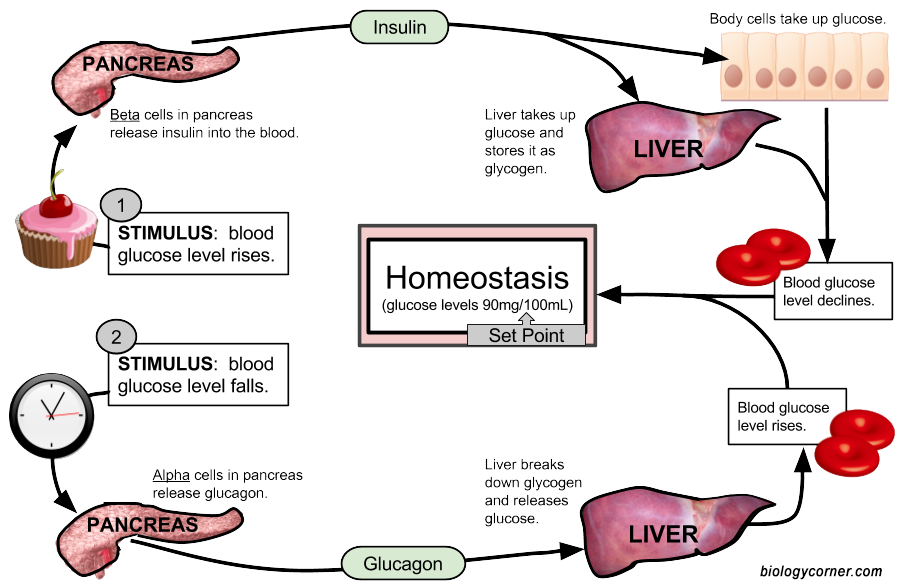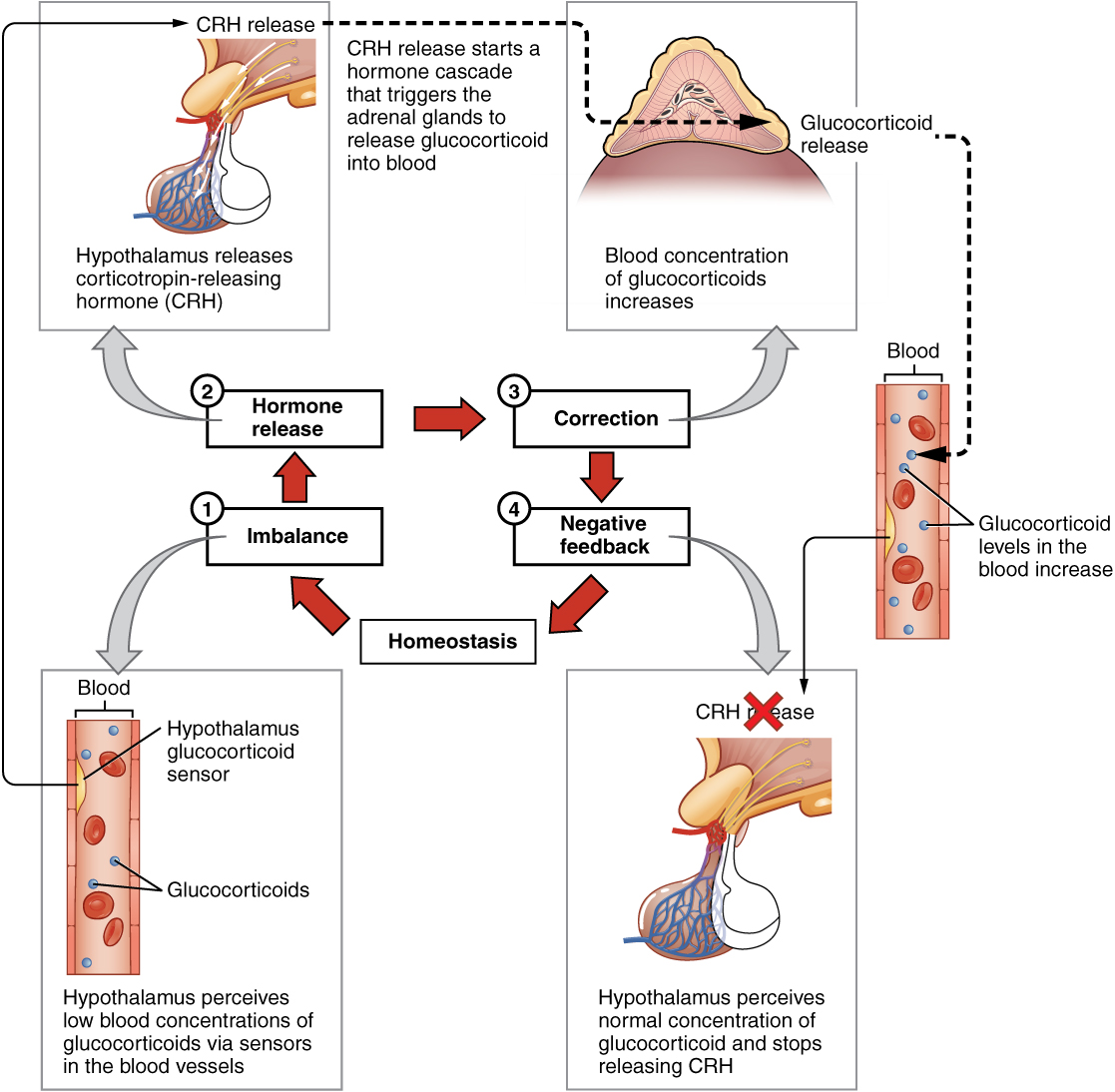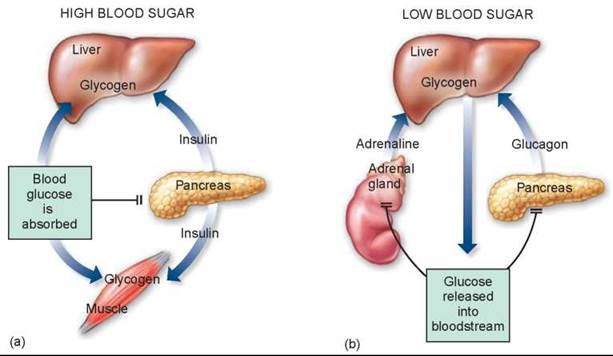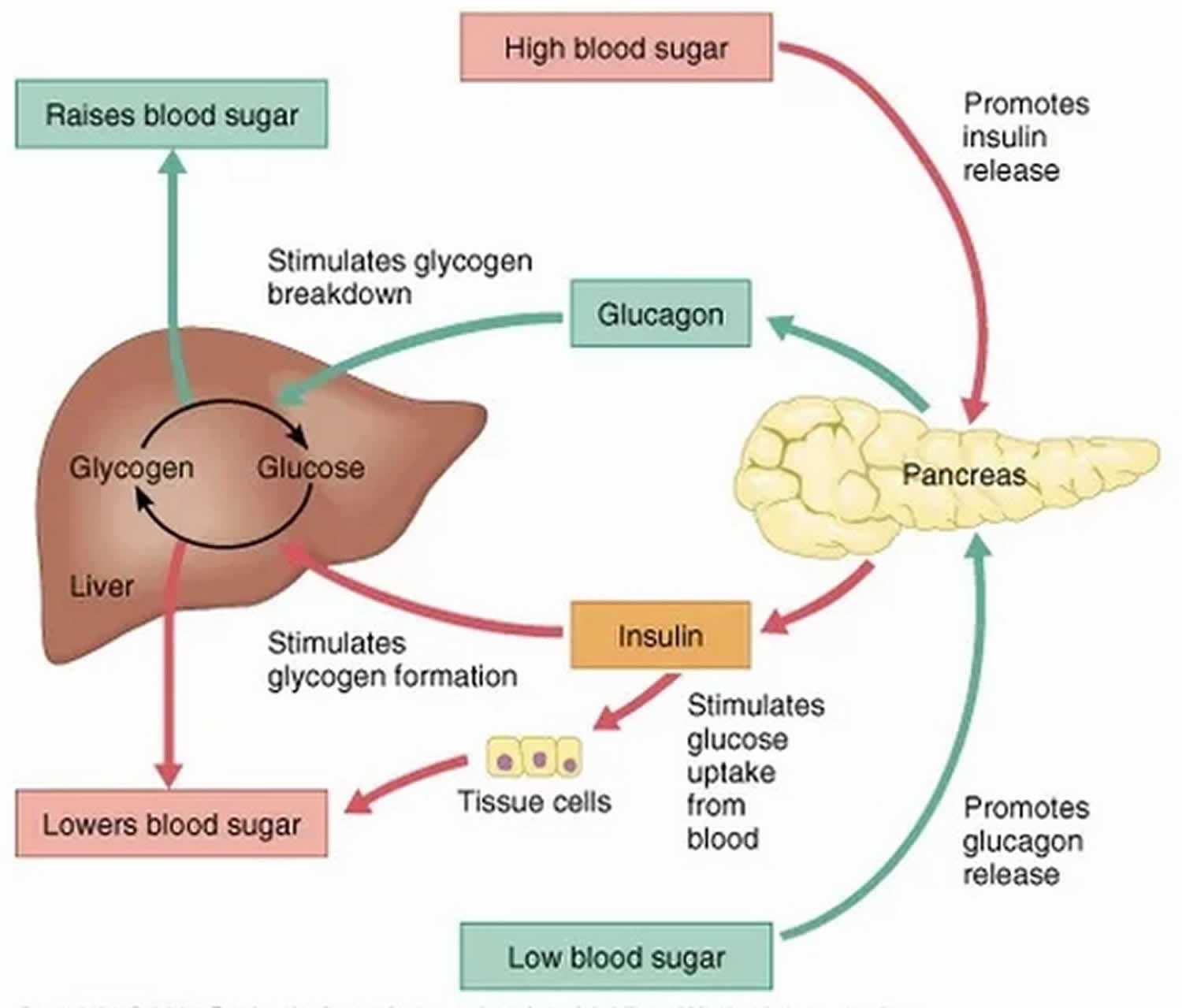is blood sugar regulated by negative feedback Blood homeostasis sugar regulation glucose control body levels feedback negative living maintaining temperature adrenal gland animal hormonal
Maintaining balance within our bodies is crucial for optimal health. One essential aspect of this equilibrium is the regulation of blood sugar levels, also known as glucose homeostasis. Our body relies on a complex feedback loop to ensure that glucose levels remain within a narrow range, preventing any sudden spikes or drops that could disrupt our well-being.
Glucose Homeostasis: A Delicate Balance
 In the intricate dance of glucose homeostasis, multiple physiological mechanisms work in harmony to maintain stable blood sugar levels. This delicate balance has been fine-tuned by millions of years of evolution, ensuring our body’s survival and health.
In the intricate dance of glucose homeostasis, multiple physiological mechanisms work in harmony to maintain stable blood sugar levels. This delicate balance has been fine-tuned by millions of years of evolution, ensuring our body’s survival and health.
One of the key players in this regulation is insulin, a hormone secreted by the pancreas. When blood glucose levels rise, such as after a meal, insulin is released into the bloodstream. Its primary function is to facilitate the uptake of glucose into our cells, where it can be used as a source of energy or stored for later use.
Conversely, when blood sugar levels drop too low, another hormone called glucagon is released. Glucagon stimulates the liver to convert stored glycogen into glucose, which is then released into the bloodstream, elevating blood sugar levels. This prevents a dangerous drop in glucose that can lead to hypoglycemia.
The Marvels of Negative Feedback Loops
 The regulation of blood sugar levels is a classic example of a negative feedback loop. Negative feedback is a mechanism that maintains equilibrium and stability. In the case of glucose homeostasis, when blood sugar levels deviate from the optimal range, the body activates mechanisms to bring them back to normal.
The regulation of blood sugar levels is a classic example of a negative feedback loop. Negative feedback is a mechanism that maintains equilibrium and stability. In the case of glucose homeostasis, when blood sugar levels deviate from the optimal range, the body activates mechanisms to bring them back to normal.
Let’s consider an example: after a meal rich in carbohydrates, blood glucose levels rise. This increase is detected by cells in the pancreas, causing the release of insulin. Insulin, in turn, promotes the absorption of glucose by cells, reducing blood sugar levels. As glucose levels drop, the stimulus for insulin release diminishes, and its secretion decreases until blood sugar levels stabilize.
This negative feedback loop ensures that blood glucose remains within a narrow range, preventing potentially harmful conditions like hyperglycemia (high blood sugar) or hypoglycemia (low blood sugar).
Striking the Balance
Achieving and maintaining glucose homeostasis is vital for our overall well-being. When this delicate balance is disrupted, it can lead to various health issues, including diabetes. Diabetes mellitus is a chronic condition characterized by an inability to regulate blood sugar levels properly.
Type 1 diabetes occurs when the pancreas fails to produce sufficient insulin, while type 2 diabetes results from a combination of insulin resistance and impaired insulin production. Both types of diabetes disrupt the delicate feedback loop that regulates blood sugar, leading to elevated glucose levels and potentially serious complications.
Furthermore, disruptions in glucose homeostasis can affect various body systems. Prolonged hyperglycemia can damage blood vessels, leading to cardiovascular problems. It can also impair kidney function, cause nerve damage, and contribute to vision impairment. On the other hand, hypoglycemia can lead to fainting, seizures, and even coma in severe cases.
Understandably, maintaining glucose homeostasis is a top priority for our body. Through the intricate interplay between hormones, cells, and organ systems, our body diligently keeps blood sugar levels in check, ensuring our well-being and ability to thrive.
In conclusion, the regulation of blood sugar levels, also known as glucose homeostasis, is a fascinating and essential process within our bodies. The negative feedback loop involving insulin and glucagon ensures that blood glucose remains within the optimal range. By understanding and appreciating this intricate dance of equilibrium, we can better appreciate the wonders of our body’s ability to maintain balance and keep us healthy.
If you are looking for ️ Homeostasis blood sugar regulation. Homeostasis of Glucose Levels you’ve came to the right place. We have 5 Pics about ️ Homeostasis blood sugar regulation. Homeostasis of Glucose Levels like Blood sugar regulation & hormone that regulates blood sugar, Hormones · Anatomy and Physiology and also Hormones · Anatomy and Physiology. Read more:
️ Homeostasis Blood Sugar Regulation. Homeostasis Of Glucose Levels
 legendofsafety.comblood homeostasis regulation glucose sugar feedback loop levels insulin positive glucagon diabetes pancreas control loops endocrine liver decreases decrease
legendofsafety.comblood homeostasis regulation glucose sugar feedback loop levels insulin positive glucagon diabetes pancreas control loops endocrine liver decreases decrease
Hormones · Anatomy And Physiology
 philschatz.comfeedback hormones negative loop endocrine physiology system control stress pathways hormone glucocorticoid regulation release anatomy gland adrenal hypothalamus glucocorticoids loops
philschatz.comfeedback hormones negative loop endocrine physiology system control stress pathways hormone glucocorticoid regulation release anatomy gland adrenal hypothalamus glucocorticoids loops
️ Homeostasis Blood Sugar Regulation. Homeostasis Of Glucose Levels
 legendofsafety.comblood homeostasis sugar regulation glucose control body levels feedback negative living maintaining temperature adrenal gland animal hormonal
legendofsafety.comblood homeostasis sugar regulation glucose control body levels feedback negative living maintaining temperature adrenal gland animal hormonal
Blood Sugar Regulation & Hormone That Regulates Blood Sugar
 healthjade.netblood regulation sugar hormone regulates contents track
healthjade.netblood regulation sugar hormone regulates contents track
Blood Glucose Level Negative Feedback Loop. | Download Scientific Diagram
 www.researchgate.netBlood homeostasis sugar regulation glucose control body levels feedback negative living maintaining temperature adrenal gland animal hormonal. ️ homeostasis blood sugar regulation. homeostasis of glucose levels. Blood glucose level negative feedback loop.
www.researchgate.netBlood homeostasis sugar regulation glucose control body levels feedback negative living maintaining temperature adrenal gland animal hormonal. ️ homeostasis blood sugar regulation. homeostasis of glucose levels. Blood glucose level negative feedback loop.